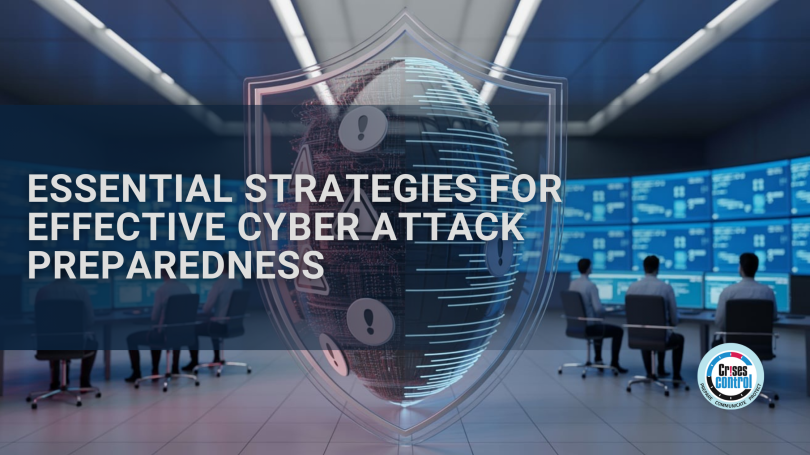When cybercriminals target organisations, they often aim to disrupt operations, steal sensitive data, or extort hefty ransoms. Take Clorox’s, August 2023, cyberattack as an example. Despite being a household name known for its cleaning products, Clorox was compelled to temporarily take certain systems offline, switch to manual processing for orders, and even faced increased product availability issues. While the company is on the path to recovery, it raises crucial questions about the need for robust cyber attack preparedness. Such incidents can not only affect a company’s bottom line but also erode customer trust and loyalty.
Similarly, MGM Resorts is facing class action lawsuits following a cyberattack in September 2023. This lawsuit alleges that the company failed to prevent the cyberattack, putting consumers’ personally identifiable information at risk. The cyber attack exposed a common vulnerability – human error. The breach was attributed to a vishing (voice phishing) attack, highlighting that even the most sophisticated systems can be compromised through human behaviour. Verizon’s 2023 Data Breach Investigations Report found that a staggering 74% of security incidents have a root cause in some form of human error or behaviour.
These two cyber attacks highlight the high cost of inadequate cyber attack preparedness.
Strategies for Effective Cyber Attack Preparedness
In the landscape of cybersecurity, having a preparedness plan is your first line of defence. Specifically, we’re talking about Business Continuity plans – the roadmaps that can mean the difference between chaos and control in the wake of a cyber attack.
The Role of Business Continuity Plans
Business Continuity plans are indispensable in dealing with the aftermath of a cyber attack. They serve as comprehensive guides that outline how your organisation should respond, assign roles and responsibilities to key stakeholders, clarify communication channels, and provide clear steps to take in the event of an attack. These plans encompass a wide array of aspects, from technical procedures to employee safety protocols.
Here’s the essence of why they are indispensable:
- Minimising Damage: Cyber attacks can paralyse operations, compromise data, and erode trust. A well-structured Business Continuity plan helps limit the extent of the damage, enabling a quicker recovery.
- Ensuring Data Resilience: Your organisation’s data is one of its most valuable assets. These plans define how to back up and restore data, ensuring minimal loss in case of an attack.
- Maintaining Customer Trust: In the aftermath of an attack, customers look to you for reassurance. Business Continuity plans detail how to communicate with stakeholders, preserving their trust even in challenging times.
- Legal and Regulatory Compliance: Certain industries have stringent regulatory requirements. These plans help ensure your organisation remains compliant even in the face of a cyber attack.
In essence, Business Continuity plans are your organisation’s blueprint for navigating the tumultuous waters of a cyber attack, ensuring that you’re not only prepared but resilient in the face of adversity.
The Crucial Role of Mass Notification Systems
While Business Continuity plans act as your guiding light during a cyber attack, Mass Notification Systems (MNS) serve as your early warning system and first line of defence. These systems empower your organisation to be proactive, often preventing attacks or mitigating their impact.
- Real-time Threat Alerts: MNS are designed to detect and alert you to potential threats in real time. This proactive approach allows you to take swift action before an attack can fully materialise.
- Rapid Communication: In the event of a cyber attack, every second counts. MNS enable you to communicate critical information to your team, stakeholders, and relevant authorities instantly, ensuring a rapid response.
- Coordinated Response: Cyber attacks can be multifaceted and complex. MNS facilitate coordinated responses by notifying the right people with the right information, streamlining decision-making processes.
- Employee Safety: Ensuring the safety of your employees is paramount. MNS can disseminate safety instructions and updates, helping your staff respond appropriately to the situation.
- Preventive Measures: MNS can also play a role in preventing cyber attacks. By alerting you to suspicious activities or vulnerabilities in your network, they allow you to take pre-emptive measures, fortifying your defences.
Mass Notification Systems complement Business Continuity plans by offering a proactive layer of defence against cyber threats. When integrated seamlessly, these two components form an ironclad shield, significantly enhancing your organisation’s cyber attack preparedness and resilience.
Conclusion
Cyber attack preparedness is not merely an option; it’s a fundamental necessity. We’ve discussed the critical strategies that can fortify your organisation against the growing tide of cyber threats. From the indispensable role of Business Continuity plans in orchestrating your response to the aftermath of an attack, to the proactive shield provided by Mass Notification Systems, each element plays a pivotal role in safeguarding your operations, data, and reputation.
The lessons from recent incidents, like Clorox’s production disruption and MGM’s human error vulnerability, serve as stark reminders that the cost of inadequate preparedness can be severe. Financial losses, operational disruptions, and reputational damage are not outcomes any organisation can afford.
Ready to take the next step towards enhancing your cyber attack preparedness? Discover how Crises Control can empower your organisation to enhance its resilience. Request a live demo to see our Emergency Mass Notification tools in action.
Prepare, protect, and proactively respond – because when it comes to cyber attacks, readiness is the ultimate safeguard.







